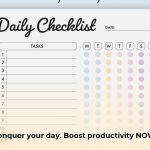Feeling pulled in a million directions? You’re not alone. The quest of how to have a balance life is a universal struggle. But it’s not some mythical, unattainable goal. It’s about intentional choices and small, consistent actions.
At a glance:
- Learn to identify the key signs your work-life balance is off-kilter.
- Discover practical, actionable steps to reclaim your time and energy.
- Understand how to set realistic boundaries in a 24/7 world.
- Explore strategies for remote work and manager support.
- Get answers to common questions about achieving work-life harmony.
The Delicate Dance: Recognizing the Imbalance
Before diving into solutions, it’s crucial to spot the red flags signaling that your work-life balance has gone astray. It’s not always about the number of hours worked. It’s about the impact those hours have on your well-being and relationships.
Here are some telltale signs:
- Constant Fatigue: Feeling drained, even after a full night’s sleep.
- Irritability: Snapping at loved ones or colleagues over minor issues.
- Neglected Relationships: Feeling disconnected from family and friends.
- Missed Opportunities: Skipping hobbies, social events, or personal appointments due to work.
- Physical Symptoms: Experiencing headaches, stomach problems, or other stress-related ailments.
- Mental Fogginess: Difficulty concentrating, making decisions, or remembering things.
- Resentment: Feeling resentful towards work or your personal life.
- Burnout: Emotional, physical, and mental exhaustion caused by prolonged or excessive stress.
Think of it like this: your life is a juggling act. Work, family, hobbies, self-care – each is a ball in the air. A good balance means keeping most of those balls aloft without dropping them. A bad balance means dropping several balls, leading to a chaotic mess.
Core Strategies: Reclaiming Your Time and Energy
The essence of how to have a balance life rests on a handful of actionable strategies.
1. Setting Boundaries: Building Your Fortress of Sanity
Boundaries are the foundation of a balanced life. They define what you will and will not tolerate, both at work and at home. It is deciding when to say no.
- Work Hours: Establish clear start and end times for your workday. Stick to them as much as possible. Turn off notifications and resist the urge to check emails after hours.
Example: Tell your colleagues, “I’m generally offline after 6 PM, but if it’s an emergency, please text me.” - Workspace: Designate a specific area in your home for work. When you’re not working, avoid that space. This helps create a mental separation between work and personal life.
- Technology: Use technology to your advantage. Set up “do not disturb” modes, block distracting websites, and schedule regular digital detoxes.
- Saying No: Learn to decline requests that overload your plate and compromise your well-being. This is especially crucial at work.
Example: Instead of agreeing to take on another project, say, “I’m currently at capacity. Let’s discuss reprioritizing my workload or delegating this task.”
2. Prioritization: Taming the To-Do List
Not all tasks are created equal. Prioritization is about identifying the most important tasks and focusing on them first.
- The Eisenhower Matrix: This classic time management tool categorizes tasks into four quadrants: urgent and important, important but not urgent, urgent but not important, and neither urgent nor important. Focus on the first two quadrants and delegate or eliminate the others.
- Time Blocking: Schedule specific blocks of time for different activities, both work-related and personal. This helps you allocate your time more effectively.
- The 80/20 Rule (Pareto Principle): This principle states that 80% of your results come from 20% of your efforts. Identify the 20% of tasks that yield the greatest impact and focus on those.
- “Eat the Frog”: Tackle your most challenging task first thing in the morning. This eliminates procrastination and sets a positive tone for the rest of the day.
3. Self-Care: Refueling Your Engine
Self-care is not selfish; it’s essential. It’s about taking care of your physical, emotional, and mental well-being.
- Physical Health: Exercise regularly, eat a healthy diet, and get enough sleep. Even small changes can make a big difference.
- Mental Health: Practice mindfulness, meditation, or yoga. Engage in activities that reduce stress and promote relaxation.
- Emotional Health: Connect with loved ones, pursue hobbies, and engage in activities that bring you joy.
- Rest and Recovery: Take regular breaks throughout the day and schedule time off to recharge. Fully disconnect from work during vacations.
4. Communication: Asking for Help
Don’t be afraid to ask for help. This applies to both your personal and professional life.
- At Work: Communicate with your manager about your workload, expectations, and any challenges you’re facing. Explore options for flexible work arrangements.
- At Home: Delegate tasks to family members. Don’t try to do everything yourself.
- Seek Support: Talk to a therapist, coach, or trusted friend about your struggles.
5. Adapting to Remote Work Realities
Remote work offers flexibility, but it can also blur the lines between work and personal life. According to research, only a third of remote employees feel they have a strong work-life balance.
Here’s how to make it work:
- Dedicated Workspace: Create a specific area in your home solely for work.
- Rituals: Establish routines to signal the start and end of the workday.
- Breaks: Take regular breaks throughout the day. Step away from your computer, stretch, and get some fresh air.
- Self-Check-Ins: Regularly assess your energy levels, stress levels, and overall well-being. Adjust your schedule as needed.
Making It a Habit: Sustained Rhythm
Maintaining a healthy work-life balance isn’t a one-time fix. It’s an ongoing process that requires consistent effort and adjustments. Consider it an ever-evolving relationship that needs constant nurturing.
- Regular Evaluations: Check in with yourself regularly to assess your progress. Are you meeting your goals? Are you feeling more balanced?
- Flexibility: Be prepared to adjust your strategies as your needs and circumstances change.
- Patience: It takes time to establish new habits and routines. Don’t get discouraged if you don’t see results immediately.
- Schedule EVERYTHING: Seriously. Put personal appointments, breaks, and even time for relaxation on your calendar. Treat them as seriously as work meetings.
Practical Playbook: Immediate Implementation
Here’s a quick-start guide to get you moving today:
- Identify Your Imbalances: What areas of your life are suffering due to work? Relationships? Health? Hobbies?
- Set One Small Boundary: Just one. Maybe it’s no email after 7 PM.
- Schedule One Self-Care Activity: Even 15 minutes of reading counts.
- Delegate One Task: At work or at home, pass something off your plate.
- Communicate: Talk to your manager, partner, or a friend this week about how you’re feeling.
The key is starting small and being consistent. Over time, these small changes will add up to a significant improvement in your work-life balance.
Quick Answers: Common Questions & Misconceptions
Q: What if my job requires me to be available 24/7?
A: Even in demanding roles, boundaries are essential. Start small and be strategic. Get clear on your limits and communicate them consistently. For example, designate specific hours for checking email or responding to calls.
Q: How can I improve my work-life balance when my workload is overwhelming?
A: Communicate with your manager about your workload and explore options for delegating tasks, reprioritizing projects, or seeking additional support. If nothing else works, it may be time to Work-life balance philosophy explored and consider a different career path.
Q: What if I feel guilty taking time for myself?
A: Remember that self-care is not selfish. It’s essential for your well-being and productivity. When you take care of yourself, you’re better able to perform at your best in all areas of your life.
Q: How do I deal with colleagues who don’t respect my boundaries?
A: Be assertive and consistent. Remind them of your boundaries and explain why they’re important to you. If necessary, involve your manager or HR department.
Q: Is work-life balance even possible?
A: Yes, absolutely. It requires a conscious effort, but it’s achievable. It’s not about achieving a perfect 50/50 split, but about finding an equilibrium that works for you.
A Balanced Life: A Personal Journey
Ultimately, learning how to have a balance life is a personal journey. There’s no one-size-fits-all solution. It’s about finding what works for you and making adjustments along the way. It is a journey not a destination.
Start by taking small steps, being patient with yourself, and celebrating your progress. Your well-being is worth the effort.
- Unlock Work-Life Harmony:Your Guide to Integration - November 27, 2025
- Find Your Work-Life Balance Quotes: Achieve Harmony Now - November 25, 2025
- Unlock Physician Assistant Work Life Balance: Your Guide to Fulfillment - November 23, 2025
















